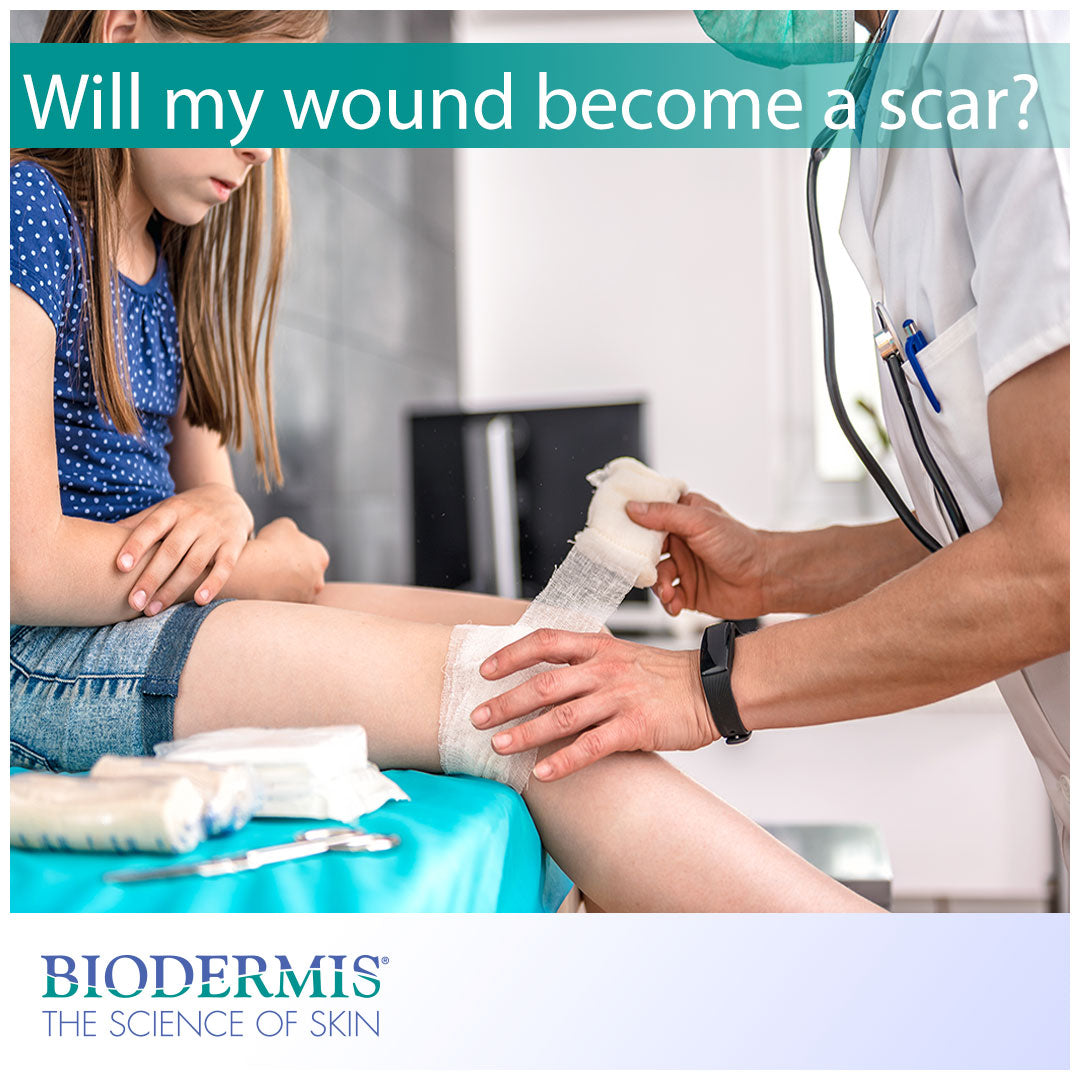Scars are the result of a complex and dynamic wound healing process that follows four distinct stages: hemostasis, inflammatory, proliferative, and maturation. In most cases, if a wound has to go through each of these stages, it will eventually form into a scar. Major wounds from an injury or surgery will always become scars. However, there are some cases in which a wound will not become a scar, and we will explore these in this article. If you are certain that you will have scar tissue in the near future, it’s good to know that there are safe and effective scar treatment options available to you.
Wounds and scarring
A wound will always become a scar if the trauma goes deep enough to penetrate the dermis (middle) layer of skin. Damage to the dermis will trigger the wound healing response described above. During the wound healing process, collagen fibers and other connective tissues come together to repair the damaged skin. The resulting scar may appear raised or discolored, which describes keloids and hypertrophic scars. These scar types are the product of an overproduction of collagen that occurs in response to injury. The collagen builds up and forms a scar that differs in texture, height, and appearance from the surrounding skin. These types of scars are often due to genetics, but environmental factors may play a role too. If the wound becomes infected or reinjured during the healing process, there is a greater chance that the scar that follows will be abnormal in appearance. Other factors, such as smoking and drinking can also have a negative impact on wound healing and scarring.
Not all wounds will become scars. Injuries that only damage the epidermis (top) layer of skin will likely not result in the formation of scar tissue. Paper cuts, scratches, and minor pimples are all examples of surface injuries that will generally not become scars. Some common ways to minimize the risk of scarring include cleaning your wound with soap and running water, covering it with a bandage, and eliminating smoking and drinking during the healing process. Furthermore, as we get older, the event of significant scarring becomes less likely.
Clinically-proven scar treatment
Medical grade silicone gel for scars is the only clinically-proven topical treatment on the market for the prevention and reduction of keloids and hypertrophic scars. Silicone gel works simply and effectively by inducing moisture to the scar bed while allowing oxygen to pass through its semi-permeable layer. This optimal balance (homeostasis) of moisture and oxygen signals fibroblasts in the skin to scale back collagen production at the scar site. Once collagen production returns to a normal level, the effect will be a flatter and smoother scar. Silicone gel is safe for adults and children of all ages, and can be used on old and new scars. Because silicone is hypoallergenic and non-comedogenic, it’s safe to use on the face and body. Ask your physician if silicone gel is right for you or purchase products for yourself at biodermis.com.
Biodermis is an innovative market leader with 30 years of expertise in the medical silicone industry. Visit Biodermis.com today to explore a complete range of scar management and post-operative care solutions.
PHYSICIANS AND MEDICAL PROFESSIONALS: REFER OR RESELL?
Biodermis offers custom tailored referral programs designed to simplify and reduce the cost of your patients' post-op care. Additionally, we offer professional pricing if you opt to retail our products. Give us a call at 800.322.3729, and we will be happy to provide additional details on these programs.






